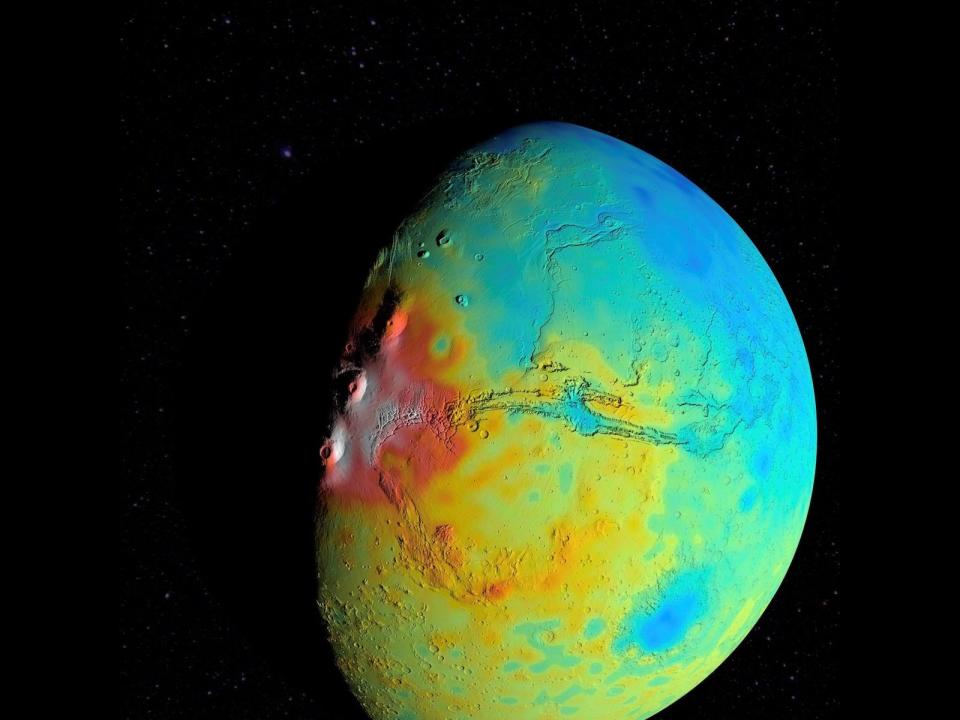Mars has a less dense crust than astronomers thought
Understanding the crust provides important information about the planet’s evolution.
Understanding the crust of a planet provides important information about the planet's history and its interior structure. But getting details about the crust of another planet -- like its thickness and density, for instance -- is no simple task. However, NASA researchers have developed a new way of analyzing the crusts of our solar system brethren that allows for more accurate estimates based on less information.
A planet's gravitational field is an important piece of the puzzle when it comes to understanding its crust. We have detailed measurements of our own planet's gravitational field, but we have far less data on other planets' fields, limiting what we can glean about their surfaces. For example, NASA's GRAIL mission, which sent two space probes to analyze the Moon, provided much higher resolution data of the Moon's gravitational field than we ever had before, which led to more accurate calculations of the density of the Moon's crust and its interior structure.
To get more information out of the data we have from Mars, NASA researchers took into account the topography, or elevation changes, on the surface of the planet. That information combined with gravity field data provided calculations of Mars' crust that depict a less dense surface than we thought it had. Based on what we knew about what makes up Mars' soil -- which is how we've estimated its crust density before -- researchers believed the planet's crust was about as dense as the ocean floors on Earth, but it turns out to be less dense than that. "As this story comes together, we're coming to the conclusion that it's not enough just to know the composition of the rocks," Greg Neumann, a researcher on the project, said in a statement. "We also need to know how the rocks have been reworked over time."
The team also learned that there's quite a bit of variation across the planet's surface, with volcanic areas being much denser than others. And the lower-than-expected density is likely due to porous soil. Overall, these findings give researchers a better jumping off point when it comes to figuring out what the inside of the planet looks like.
"The crust is the end-result of everything that happened during a planet's history, so a lower density could have important implications about Mars' formation and evolution," said Sander Goossens who led the project.
The findings were published in Geophysical Research Letters.



